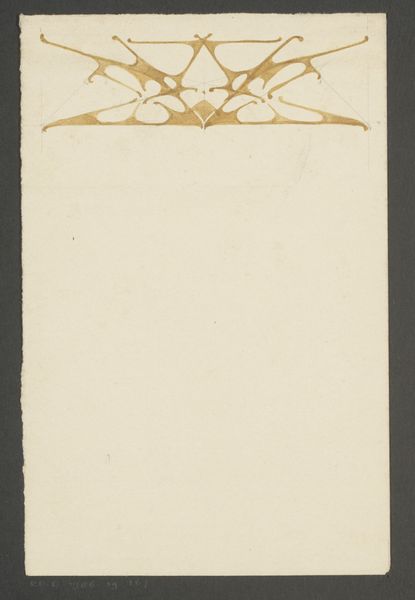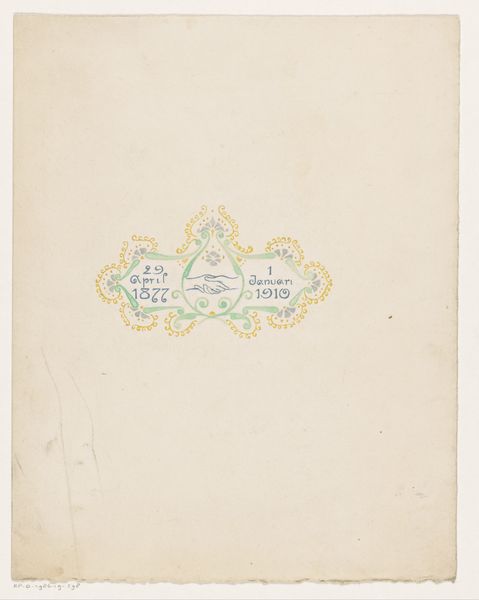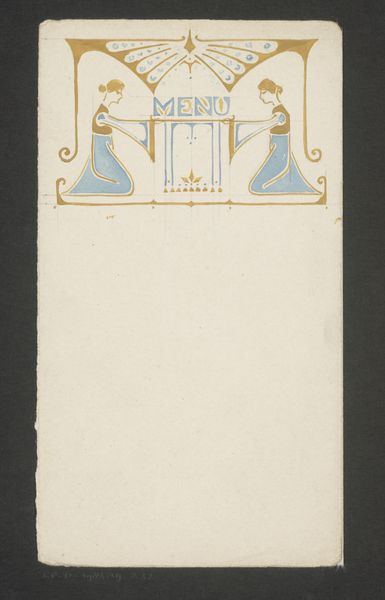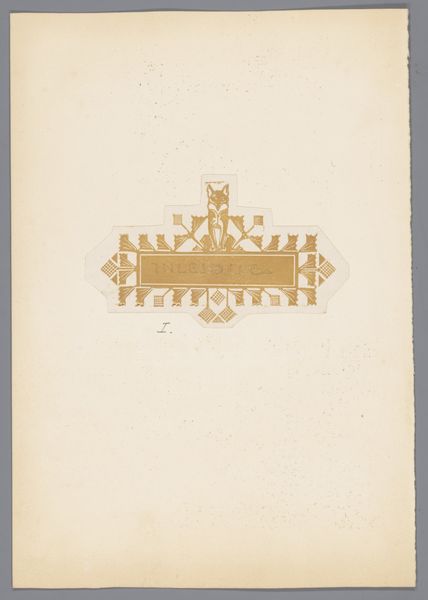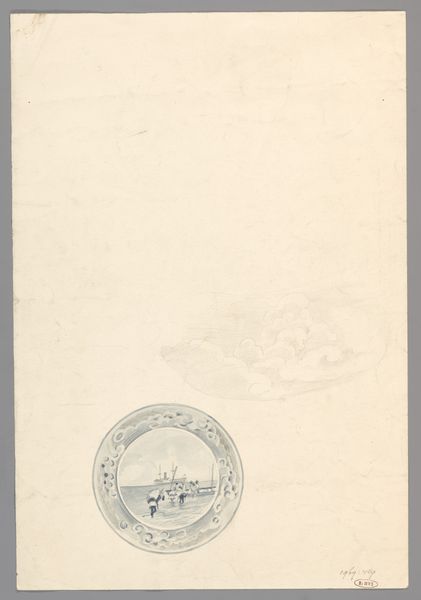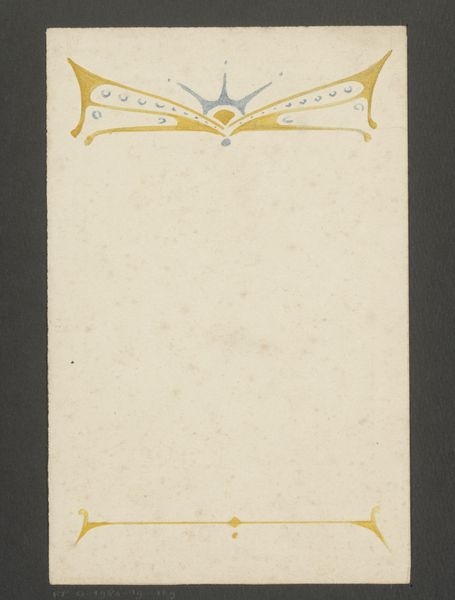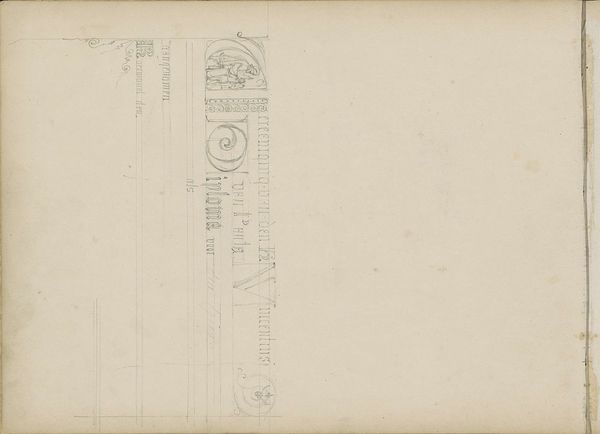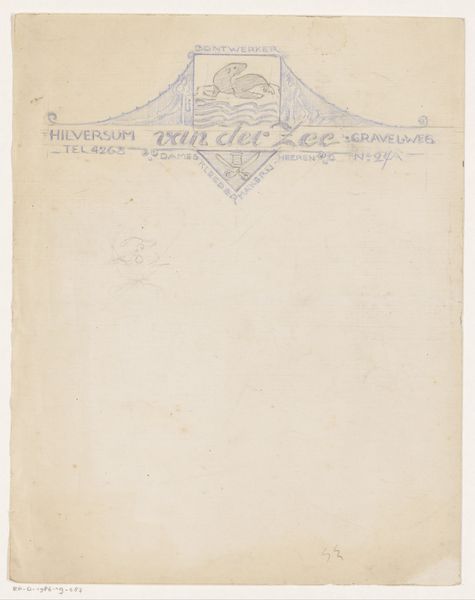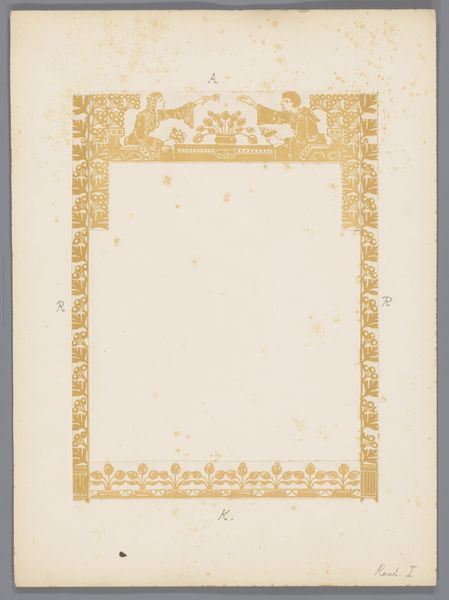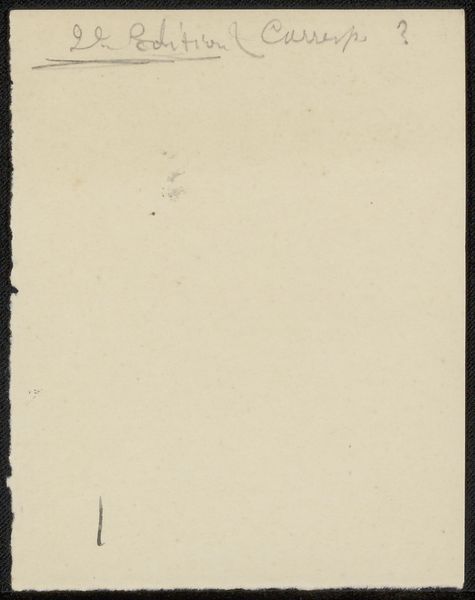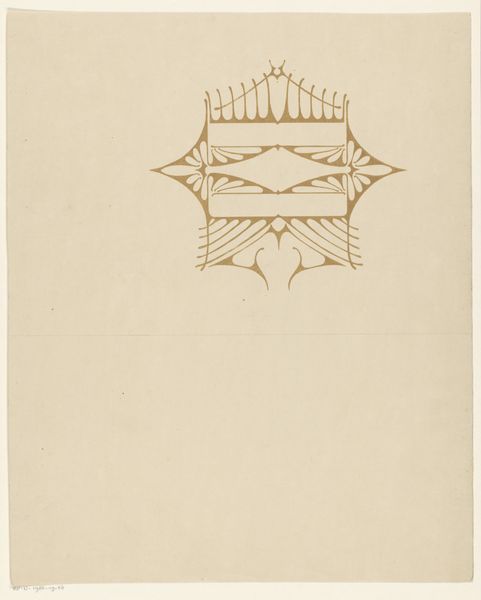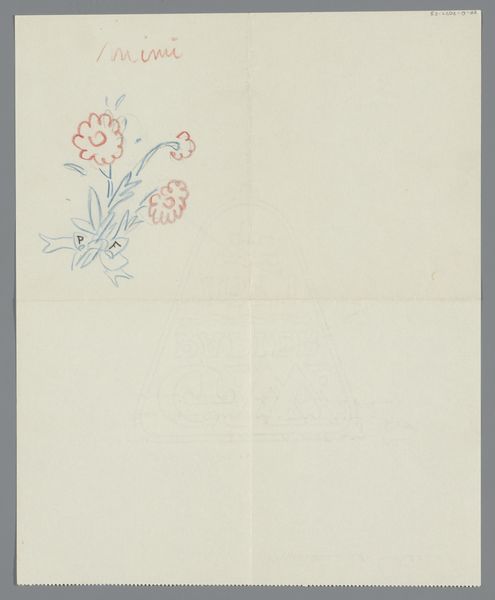
drawing, paper, ink
#
drawing
#
art-nouveau
#
paper
#
ink
#
geometric
#
decorative-art
Dimensions: height 214 mm, width 142 mm
Copyright: Rijks Museum: Open Domain
Curator: Looking at this piece, I’m immediately struck by the contrast between the rigid geometric elements and the organic flourishes. The artist appears to have juxtaposed these seemingly disparate forms in order to generate visual interest. Editor: It's called "Ontwerp voor een menukaart", or "Design for a Menu Card" in English. Reinier Willem Petrus de Vries created this with ink on paper, sometime between 1884 and 1952. You really get a sense of that Art Nouveau elegance, that pursuit of beauty in everyday objects. Curator: Yes, observe the linearity. The structure of the platter itself is highly controlled, whereas the overflowing fruit and central lidded vessel introduce a softened asymmetry. The color scheme further enhances this tension: a calming blue contrasting with bright, assertive yellows. Editor: This piece demonstrates how deeply art intertwined with the burgeoning culture of dining and public life during the late 19th and early 20th centuries. The very design of menus aimed to elevate the dining experience, subtly advertising class and sophistication. Imagine what kind of restaurant would feature such a card? Curator: The question it asks for me is, how do we, through an organization of form, convey a particular tone? Is the interplay of colors, of curvature against sharp angles, the method through which the artist sought to create a sense of refined, yet joyous indulgence? Editor: Precisely! These objects were not mere commercial items but rather social signals. This menu probably reflects aspiration, attempting to cultivate an audience ready to embrace a refined sensibility in even their most ordinary activities like selecting a meal. Curator: Consider also the visual weight – the clear inscription of "Menu" provides an overt semiotic function that integrates beautifully with the iconography that appears to celebrate the visual appeal of a prospective dish itself. Editor: De Vries has not just designed a menu but curated an expectation, an ambience for an era increasingly consumed with displays of taste. It serves not only food but a certain vision of society. Curator: It is in the fusion of functional design and ornamental details where the work ultimately transcends simple utility and achieves visual artistry. Editor: Absolutely; viewing it today grants us insight into the interplay of social ambition, artistry, and even marketing prevalent within an historical moment.
Comments
No comments
Be the first to comment and join the conversation on the ultimate creative platform.
